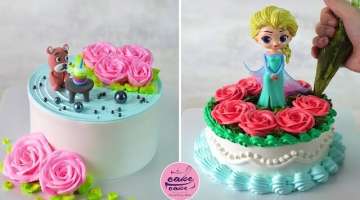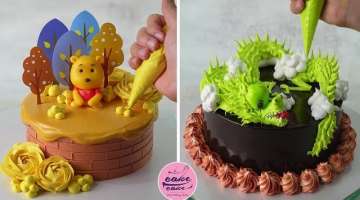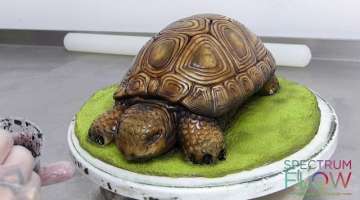10 Eye-Opening Photos That Prove Nature Is Full of Mysteries
If you have never seen an animal that can photosynthesize, if you didn’t know that albino turtles exist, and you can’t imagine what a contortionist’s spine looks like, then we have something that can amaze you. And we also have a bonus about the curious rare sea slug.
- 1 | 11

We searched for rare photos on the internet and found some that we wish we would have seen in our school biology books instead of those boring diagrams.
- 2 | 11

The Amorphopallus Titanium is one of the largest flowers in the world. It blooms once every 40 years for 4 days! Titan arum is a giant among plants, with one of the largest flowering structures and one of the foulest odours in the plant kingdom. Its flowering is rare and unpredictable, and always grabs the headlines. Amorphophallus titanum is restricted to Sumatra in the Indonesian archipelago. It is found growing in the rainforests of western Sumatra, on steep hillsides, at 120 to 365 m above sea level.
- 3 | 11

Rainbow milkweed locust (Phymateus saxosus): This Malagasy Grasshopper is a rare color. This locust's body is a riot of color; its bold hues are a warning to predators that it's toxic. When threatened, it like other members of its genus produces a poisonous froth from openings beneath its wings. This toxin comes from the milkweed plant, which the locust eats, and is strong enough to kill animals and people. Distribution: Madagascar
- 4 | 11

A native group of people called Melanesians who live on the Solomon Islands, northeast of Australia, are famous for their beautiful dark skin and naturally blonde hair.
- 5 | 11

Syncephalastrum fungi look like flowers under a microscope. Syncephalastrum is a filamentous fungus that is commonly isolated from soil and animal feces particularly in tropical and subtropical areas. It is a heterothallic fungus and requires a mating strain to produce zygospores. Syncephalastrum is commonly considered as a contaminant. It is very rarely associated with human disease. The genus Syncephalastrum contains a single species; Syncephalastrum racemosum. See the summary of synonyms and obselete names for the Syncephalastrum spp.
- 6 | 11

First Flower Grown in Space Station's Veggie Facility. This flowering crop experiment began on Nov. 16, 2015, when NASA astronaut Kjell Lindgren activated the Veggie system and its rooting "pillows" containing zinnia seeds. The challenging process of growing the zinnias provided an exceptional opportunity for scientists back on Earth to better understand how plants grow in microgravity, and for astronauts to practice doing what they'll be tasked with on a deep space mission: autonomous gardening. In late December, Kelly found that the plants "weren't looking too good," and told the ground team, "You know, I think if we're going to Mars, and we were growing stuff, we would be responsible for deciding when the stuff needed water. Kind of like in my backyard, I look at it and say 'Oh, maybe I should water the grass today.' I think this is how this should be handled."
- 7 | 11

"Just a contortionist sitting on his head...". What you're looking at is an x-ray of an individual-a contortionist in an extreme pose of spinal extension! Note how the thoracic spine stayed almost completely straight. The spine forms the central axis of the skeleton, supports the skull, and gives attachment to the thoracic cage, pectoral girdle, and upper limb. It combines strength with great flexibility as it has many joints close together. Movements of the spine are possible due to intervertebral discs, and with the fulcrum of movement occurring primarily around the nucleus pulposus. Specialized motion occurs at the atlanto-occipital and atlantoaxial joints, which do not contain a disc. Flexion and extension are common to all parts of the spine; a significant degree of flexion/extension can be achieved at the atlanto-occipital joint, cervical and lumbar spine, but is restricted in the thoracic spine. Lateral flexion is free at the atlanto-occipital joint, cervical and lumbar spine, but less free in the thoracic spine. Rotation is greatest at the specialized atlantoaxial articulations, and to a lesser degree in the cervical and lumbar spine.
- 8 | 11

Here's a hedgehog's skeleton, in case you've never seen one before.This is a genuine photograph showing the remains of a deceased hedgehog. However, it's not completely accurate to label this display as a hedgehog skeleton, as the pictured quills are not part of the animal's skeletal system. Quills are composed of keratin, the same stuff our hair and fingernails are made of, and would decompose if not artificially preserved by a taxidermist. The above-displayed picture shows the work of Russian taxidermist Маргариты Чайки (Margarita Chayka), from whom VK user Anastasia Fyodorova commissioned three pieces after her pet hedgehogs passed away. Fyodorova posted several images of these displays to her page on the Russian social media network VK in June 2018 along, with a message thanking Chayka for her stellar work.
- 9 | 11

Incredibly rare baby albino sea turtle. This tiny white turtle may not be large, so take a close look, because there likely won't be another picture of a newborn albino sea turtle for quite a while. Only around one in 10,000 animals are born albino, but according to Col Limpus, chief scientist with Queensland's Government's Threatened Species Unit, Alby is much more rare. "Albino hatchlings are extremely rare; it probably occurs at the rate of one in many hundreds of thousands of eggs that are laid.
- 10 | 11

Incredibly rare baby albino sea turtle. This tiny white turtle may not be large, so take a close look, because there likely won't be another picture of a newborn albino sea turtle for quite a while. Only around one in 10,000 animals are born albino, but according to Col Limpus, chief scientist with Queensland's Government's Threatened Species Unit, Alby is much more rare. "Albino hatchlings are extremely rare; it probably occurs at the rate of one in many hundreds of thousands of eggs that are laid.
- 11 | 11

Eastern emerald elysia is a type of sea slug which is capable of photosynthesis. It achieves this by harnessing chloroplasts from algae, and putting them into its skin. This bizarre adaptation allows it to eat very little actual food, and spend most of its life basking in the sun.



















